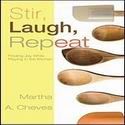Grapefruit: Half a grapefruit prior to dinner can help fill you enough that you can resist second helpings. Also, the soluble fiber in grapefruit slows down the digestion process.
Watermelon: The water from watermelon invades the space that your stomach leaves open for food, thus making you less likely to pig out. Apples and pears produce a similar result, too.
Berries: Instead of a cookie, pop some blackberries or strawberries into your mouth. Frozen blueberries also provide the illusion of enjoying a cold, high-calorie treat.
Cucumber: Cucumber has very few calories and helps to stave off liver disease and pancreatic cancer, and even keeps your nails looking amazing due to the high mineral content.
Hot peppers: Although they haven’t been directly linked to weight loss, spicy habaneros or jalapeños aid in curbing the desire to gorge since we typically eat less when our food has a fiery flavor. Hot peppers also comprise the compound capsaicin, which speeds up the metabolism.
Celery: It satisfies the need to eat something, but it has virtually no calories (one cup of celery equals only nineteen calories. Tip: instead of adding cream cheese or peanut butter to the stalk, give fat-free cottage cheese or fat-free black bean dip.
Greek yogurt: Greek yogurt keeps you satisfied longer because all proteins take their sweet time leaving your stomach.
Eggs: Start the day off right with seven grams of protein! Having an egg in the morning will keep your body busy because digesting eggs burns more calories than a carb-infested breakfast.
Fish: Full of omega-3 fatty acids, vitamins, and minerals. Wild salmon, tuna, and sardines make your body more responsive to the fat-burning hormone leptin, which is responsible for suppressing your appetite? If you don't like fish, turkey can also help as it encourages the release of tryptophan, which helps you sleep. Remember: lack of sleep wreaks havoc on your waistline!














